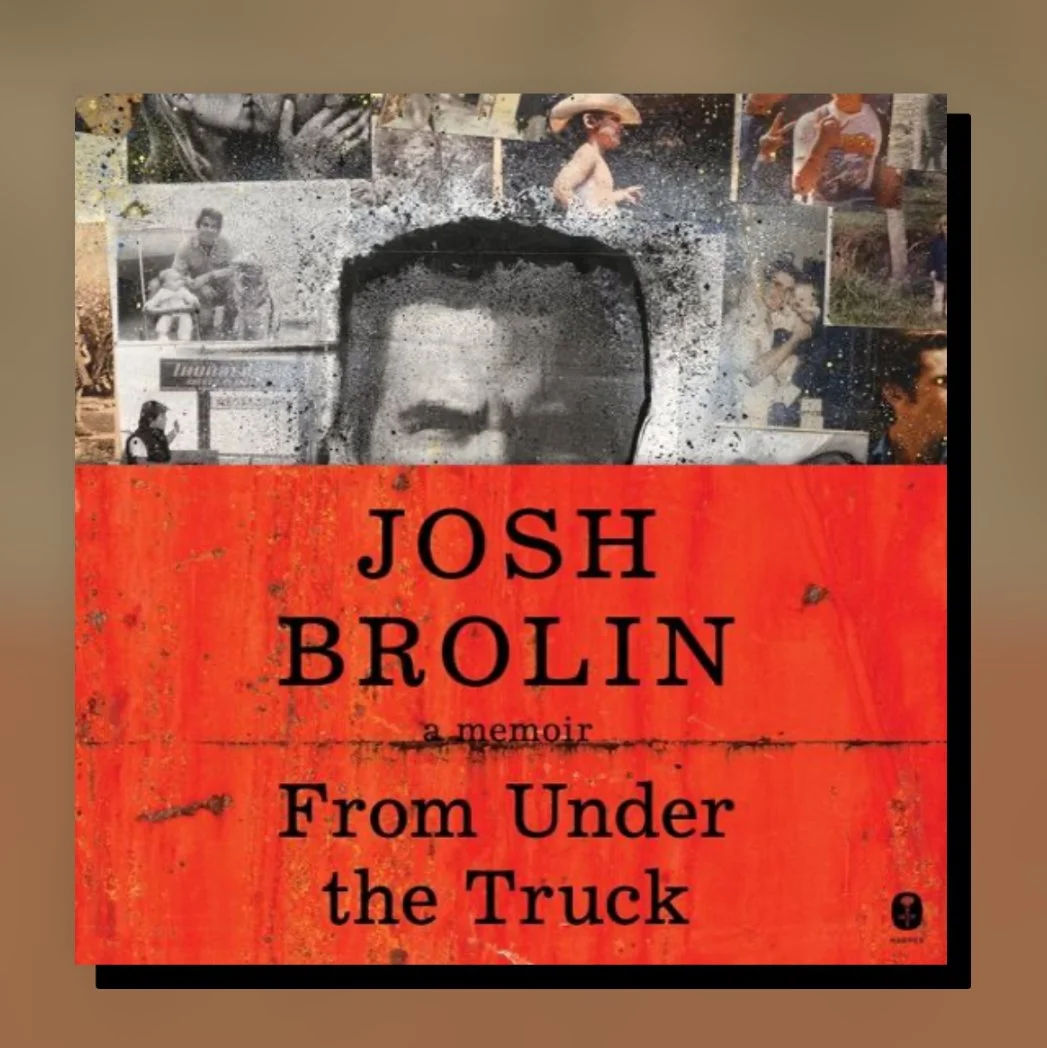From Under the Truck: A Memoir (2024) by: Josh Brolin
This was not at all what I was expecting. And maybe that was the point.
I’ve read many memoirs and the stories are always about the narrative: start at the beginning, follow a linear progression of experiences and lessons, and come to the conclusion. But this book didn’t follow that trajectory. It wasn’t about the narrative, but the sensual depths of the human experience, and the “complex geometry” of how we are interconnected with one another. It doesn’t follow a linear path, but bounces around in ways that exemplify a brainstorm of connection between seemingly unrelated memories, topics, or experiences in a way that appears to encompass the complexities of the human experience. Brolin relays a fair amount of trauma and joy, but never seems to get hung up on the impact. Rather, he appears to maintain a curiosity, seeking the adventure as he explores the spectrum between life and death.
There is a beautiful rhythm, a poetry, about this book that further exemplifies the focus on the experience rather than the narrative. I found myself confused at first, especially when some of the anecdotes never clearly identified the characters, and the author utilized third person pronouns so it wasn’t clear if he was relaying a memory or fictional story… and then I found myself detaching from the words and connecting with the rhythm of his voice. And rather than trying to organize the verbal language in my head, I found myself responding to the words and processing the material through movement. I saw myself dancing to the rhythm of his words in my head.
Brolin really leaned into the artistry of writing rather than the story. And maybe that was the point.
How did I hear about this book: Back to my favorite podcast, Armchair Expert
Would I recommend it to colleagues: Sure
Would I recommend this to clients: I would in a specific context. I appreciate the ways Brolin is able to move through his experiences (trauma, addiction, grief/loss, etc) without becoming stuck in them (seemingly) by connecting with his inherent rhythm and approaching life with curiosity. And I think that can be a unique approach to helping people to find ways out of their own stuck-ness.
How do I apply this content to my work: When I first heard Brolin’s interview on the podcast, I thought this book would be great for this review given his history with trauma and addiction. And while those elements were certainly present, the book appealed more to my dance/movement therapy lens as the primary. I integrate my DMT training in my approach to addiction counseling and trauma therapy, especially helping folks integrate mind and body by getting out of their heads and into their bodies, connect with their core sense of self, identify their own natural rhythms, and cultivating enough intrapersonal safety that they can approach life with more curiosity and resilience. As a therapist, this book reminded me of the value of getting out of my head to meet the client where they are at; to leave behind my expectations for how their story should sound and anchor into the client’s rhythm. And finally, I appreciated the challenge of identifying the web of interconnection among the various chapters and seemingly disconnected stories as it mirrors the way my brain often works to identify target chains when I support my clients through the EMDR protocol.
If you are someone who is looking for a therapist who can match your natural rhythms and help you connect with your core sense of self and you live in Washington state, contact me and let’s schedule a free phone consultation.
Disclaimers: These reviews are based on my own personal experience reading these books and do not reflect on the book’s author or publisher. I have not received any commissions or other incentives to promote my reviews. My reviews express my own unbiased opinions.




